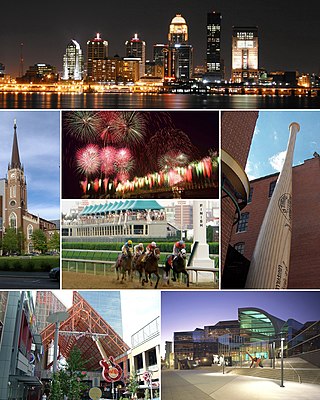
Louisville is the largest city in the Commonwealth of Kentucky and the 28th most-populous city in the United States. Louisville is the historical seat and, since 2003, the nominal seat of Jefferson County, on the Indiana border.

The West Main District is one of the five districts of downtown Louisville, Kentucky. The district, or a portion of it, is listed in the National Register of Historic Places as West Main Street Historic District, due to its containment of some of the oldest structures in the city. The buildings of this district boast the largest collection of cast iron façades of anywhere outside New York's SoHo district. The district also features "Museum Row", a collection of several notable museums located within just a few blocks of each other.
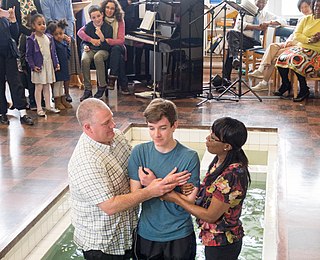
The Kentucky Baptist Convention (KBC) is a state Baptist convention affiliated with the Southern Baptist Convention. Headquartered in Louisville, it is made up of nearly 2,400 churches and 71 local associations. Membership in its churches totals more than 780,000 people.
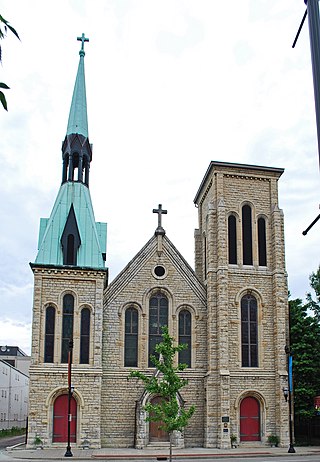
The historic Christ Church Cathedral in Louisville, Kentucky was founded on May 31, 1822. The original church building was completed in 1824, a new Romanesque Revival facade was added in 1870. The structure was listed on the National Register of Historic Places in 1973.

The historic Calvary Episcopal Church was established in 1857 and is located at 821 South 4th Street Louisville, Kentucky. This stone gothic church was built in Old Louisville in 1888 and is listed on the National Register of Historic Places. The church is a member parish of the Episcopal Diocese of Kentucky.
First Lutheran Church, or variants therof, can refer to:

As of the 2010 census, the United States Commonwealth of Kentucky had an estimated population of 4,339,367, which is an increase of 297,174, or 7.4%, since the year 2000. Approximately 4.4% of Kentucky's population was foreign-born as of 2010. The population density of the state is 107.4 people per square mile.
The history of Germans in Louisville began in 1817. In that year, a man named August David Ehrich, a master shoe maker born in Königsberg, arrived in Louisville. Ehrich was the first native-born German in Louisville, but as early as 1787, Pennsylvania Dutch (Deutsch) settlers arrived in Jefferson County from Pennsylvania. While they maintained German customs from their ancestors who came to Pennsylvania several generations before, they were not native Germans. The Blankenbaker, Bruner, and Funk families came to the Louisville region following the American Revolutionary War, and in 1797 they founded the town Brunerstown, which would later become Jeffersontown, Kentucky. Further early immigration of Germans took place as they slowly followed the Ohio River after arriving in the United States at New Orleans, and settled in the various river towns, which included not only Louisville, but Cincinnati, Ohio, and St. Louis, Missouri, as well.
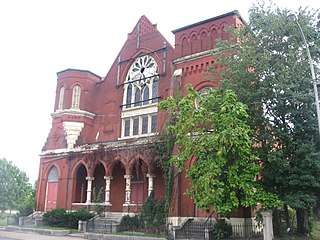
The Chestnut Street Baptist Church is a historic church at 912 W. Chestnut Street in Louisville, Kentucky. It was built in 1884 and added to the National Register of Historic Places in 1980.
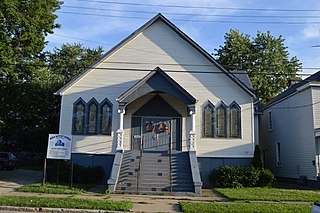
Epworth Methodist Evangelical Church, also known as Trinity Baptist Temple, is a historic Gothic Revival church at 412 M. Street in Louisville, Kentucky. It was built in 1895 and added to the National Register of Historic Places in 1983.

The German Evangelical Church of Christ Complex is a historic church complex at 1236 E. Breckinridge Street in Louisville, Kentucky. It was built during the years 1902 to 1929 and was added to the National Register of Historic Places in 1987.

Parkland Evangelical Church, also known as Greater Good Hope Baptist Church, is a historic church at 1102 S. 26th Street in Louisville, Kentucky. It was built in 1915 and added to the National Register in 1983.

St. Vincent DePaul Catholic Church is a complex of historic buildings in the Shelby Park neighborhood of Louisville, Kentucky. The main church at 1207 South Shelby Street was purchased by Sojourn Community Church in 2010, which has since rehabilitated and occupied it as Sojourn Midtown. Several related properties were listed on the National Register of Historic Places in 1984.
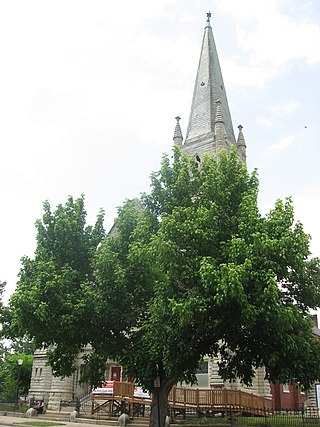
St. Peter's German Evangelical Church is a historic church at 1231 W. Jefferson Street in Louisville, Kentucky. It was built in 1894 in Late Gothic Revival style and added to the National Register of Historic Places in 1980.
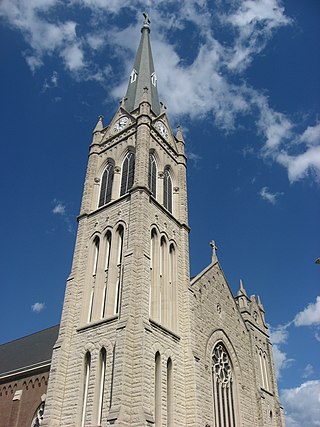
St. Boniface Catholic Church is a historic church at 501-531 E. Liberty Street in Louisville, Kentucky.
Arthur Loomis was an architect who worked from 1876 through the 1920s in the Louisville, Kentucky area. After working for noted architect Charles J. Clarke for several years, they became partners in 1891, creating Clarke & Loomis, one of Louisville's most prestigious architectural firms. After Clarke's death in 1908, Loomis struck out on his own.
St. John's German Evangelical Church or variations may refer to:
The following is a timeline of the history of the city of Louisville, Kentucky, USA.
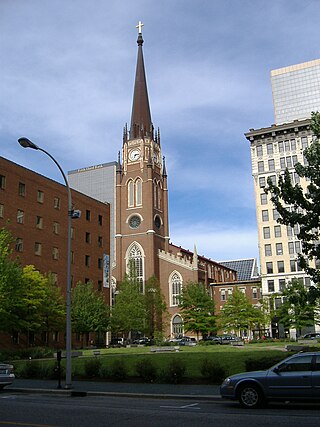
Religion in Louisville, Kentucky, includes religious institutions of various faiths; including Christianity, Judaism, Islam, Hinduism, Buddhism and Sikhism.

William Strudwick Arrasmith was an American architect known for his designs for Greyhound bus stations in the Streamline Moderne style popular in the 1930s and 1940s. Among the over 60 stations he designed are the Cleveland Greyhound Bus Station (1948), the Montgomery, Alabama, Greyhound Bus Station (1951), and the Evansville, Indiana, Greyhound Bus Terminal (1938) which are listed on the National Register of Historic Places.

















